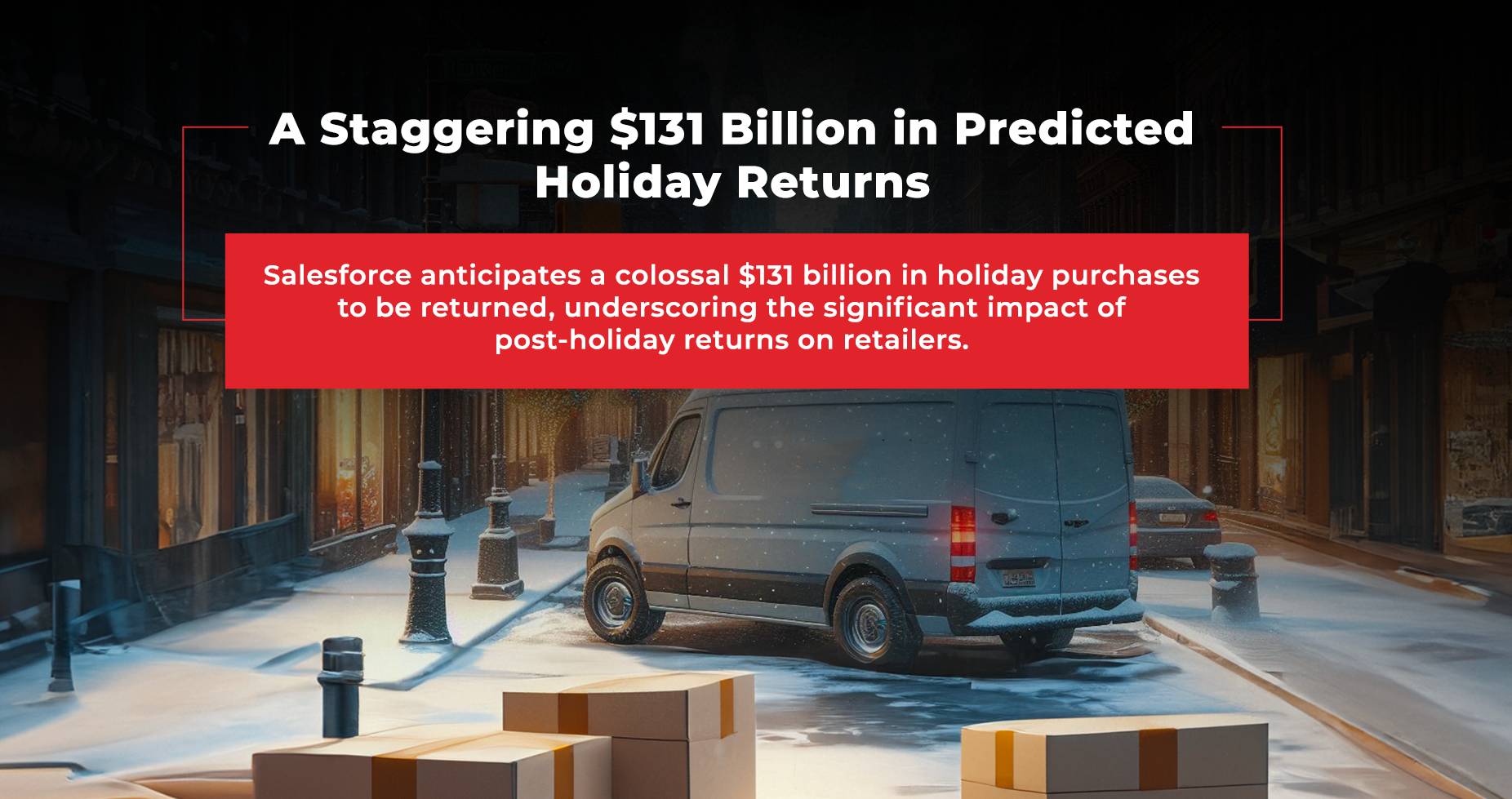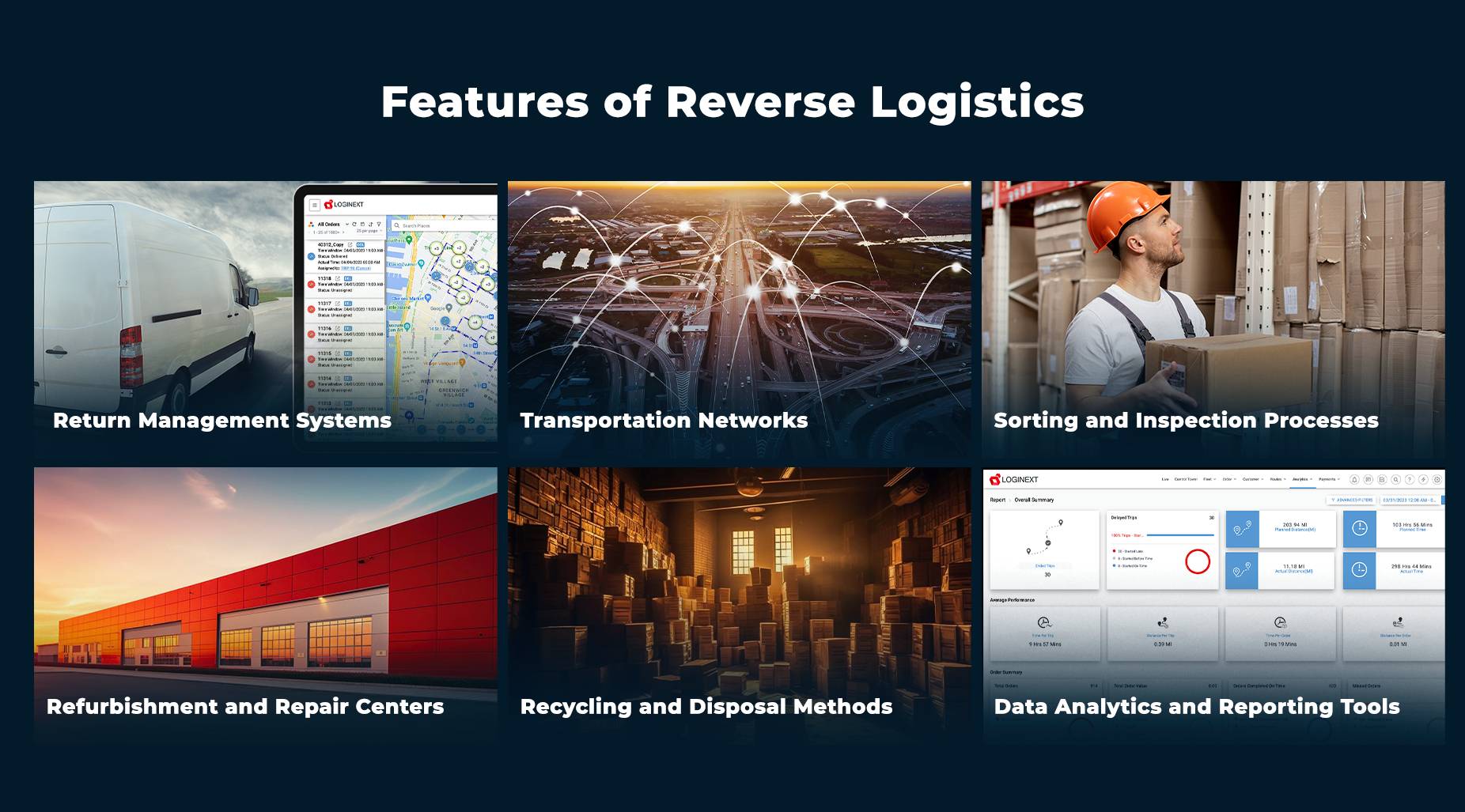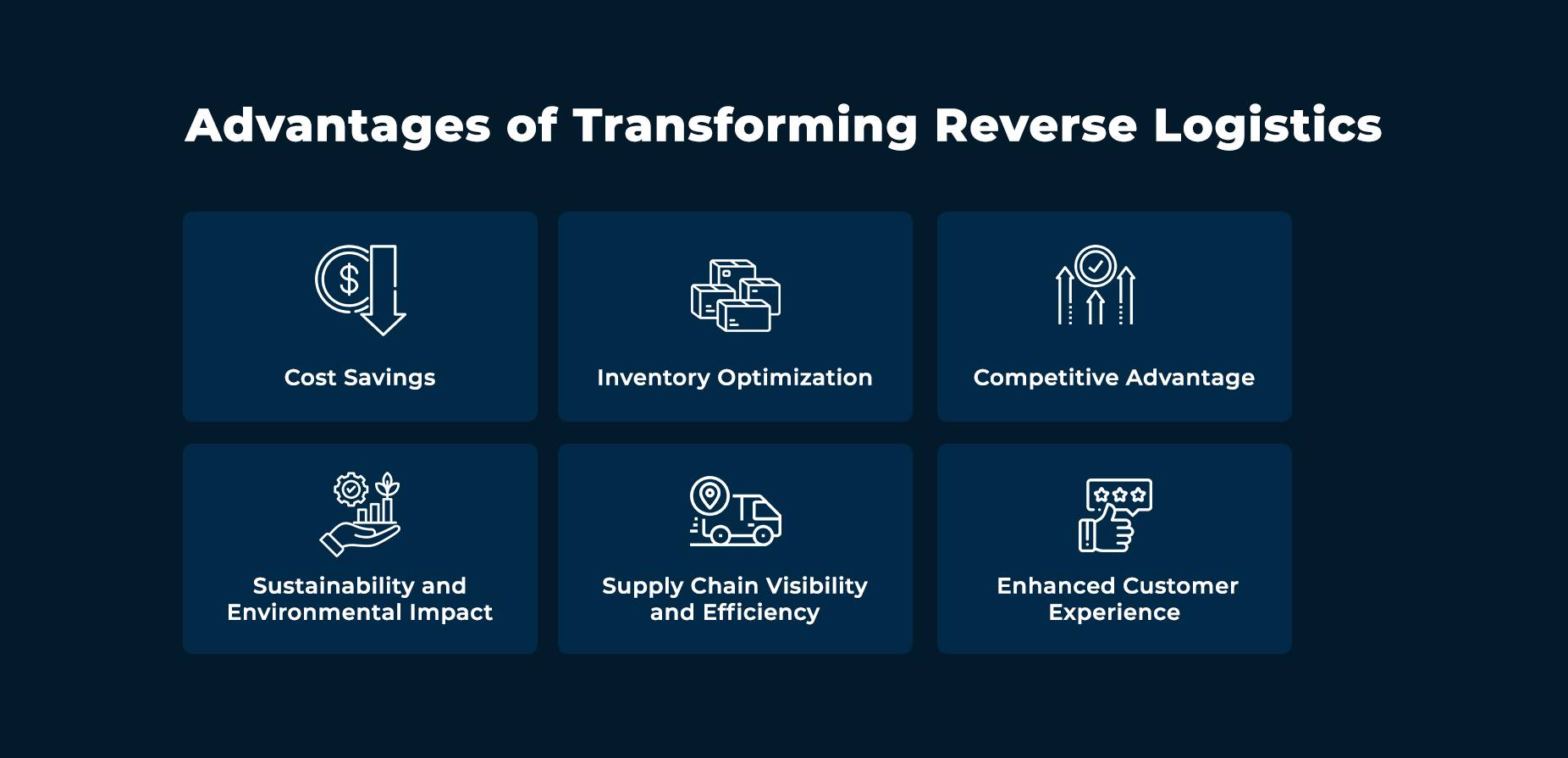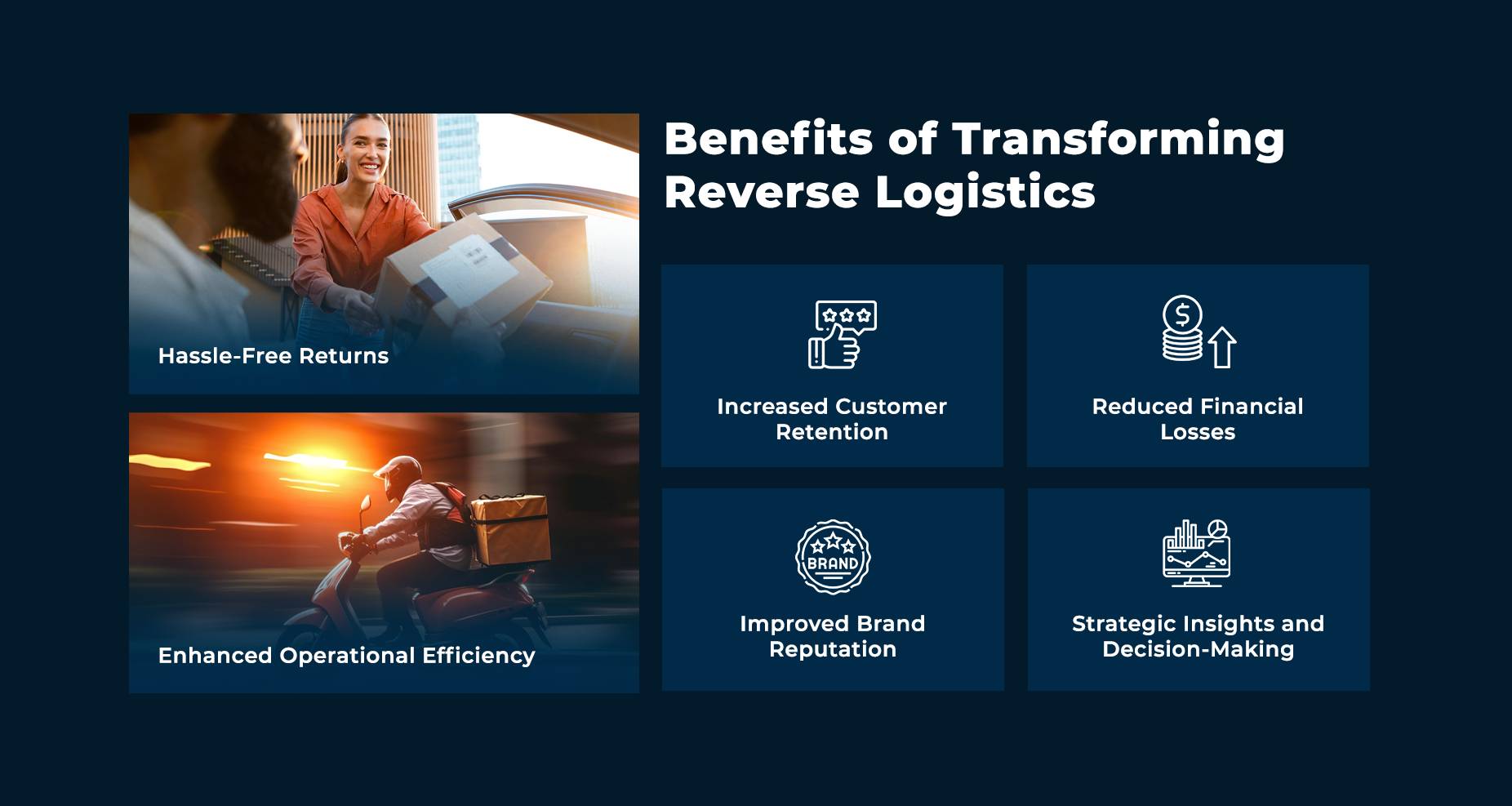
Transforming Reverse Logistics: A Necessity for Future Retail Success!
Have you ever thought about what happens to all those items you return to the store? Well, it turns out there’s a whole process called “reverse logistics” that deals with exactly that.

And let me tell you, it’s not just about returning stuff anymore. It’s becoming a crucial part of how retailers do business, and here’s why…
Features of Reverse Logistics

1. Return Management Systems: The brains behind the operation. They track returned items from the moment they’re sent back to the retailer or manufacturer. These systems help keep everything organized and ensure that returns are processed efficiently.
2. Transportation Networks: The backbone of reverse logistics. They’re responsible for moving returned items from various locations, like retail stores or distribution centers, back to the main processing facility. Efficient transportation networks ensure that returns are handled quickly and cost-effectively.
3. Sorting and Inspection Processes: Once returned items reach the processing facility, they go through sorting and inspection processes. This involves categorizing items based on their condition and determining the next steps, such as refurbishment, resale, or recycling. Accurate sorting and inspection help maximize the value of returned items.
4. Refurbishment and Repair Centers: The place where returned items are given a second chance. Items that can be repaired or refurbished are sent to these centers, where they’re restored to like-new condition. This process not only reduces waste but also allows retailers to resell refurbished items at a lower cost.
5. Recycling and Disposal Methods: Not all returned items can be resold or refurbished. Some may be damaged beyond repair or simply outdated. In such cases, retailers need efficient recycling and disposal methods to ensure responsible handling of these items. Recycling helps minimize environmental impact and supports sustainable business practices.
6. Data Analytics and Reporting Tools: Last but not least, data analytics and reporting tools play a crucial role in reverse logistics. These tools provide insights into return trends, customer behavior, and operational efficiency. By analyzing this data, retailers can identify areas for improvement and make informed decisions to optimize their reverse logistics processes.
Also Read: How Should ECommerce Brands Handle Big & Bulky Product Returns?
Advantages of Transforming Reverse Logistics

1. Cost Savings
By implementing efficient reverse logistics processes, retailers can significantly reduce costs associated with returned items. Instead of treating returns as losses, retailers can recover value from returned products through strategies like refurbishment, resale, or recycling. This not only minimizes financial losses but also generates additional revenue streams.
2. Inventory Optimization
Optimizing reverse logistics can help retailers better manage their inventory. By quickly processing returns and determining the disposition of each item, retailers can free up warehouse space and allocate resources more effectively. This reduces the risk of overstocking or understocking and ensures that inventory levels align with customer demand.
3. Enhanced Customer Experience
A seamless and hassle-free return process can greatly enhance the customer experience. When customers know that returning an item is easy and convenient, they’re more likely to make purchases with confidence. Improved reverse logistics can also lead to faster refunds or exchanges, further increasing customer satisfaction and loyalty.
4. Sustainability and Environmental Impact
Efficient reverse logistics contribute to sustainability efforts by reducing waste and minimizing environmental impact. Instead of sending returned items straight to landfills, retailers can recycle or repurpose them whenever possible. This supports eco-friendly practices and enhances the brand’s reputation as a responsible corporate citizen.
5. Supply Chain Visibility and Efficiency
Transforming reverse logistics provides retailers with greater visibility into their supply chain. By tracking returned items throughout the reverse logistics process, retailers can identify inefficiencies, bottlenecks, and areas for improvement. This allows for better resource allocation, improved decision-making, and overall supply chain optimization.
6. Competitive Advantage
Implementing advanced reverse logistics capabilities can give retailers a competitive edge in the market. By offering superior return policies and streamlined processes, retailers can differentiate themselves from competitors and attract more customers. Additionally, efficient reverse logistics can help retailers adapt to changing market dynamics and stay ahead of industry trends.
Don’t miss out: How To Optimize Reverse Logistics To Improve Your Revenue.
Benefits of Transforming Reverse Logistics

1. Hassle-Free Returns
One of the key benefits of transforming reverse logistics is providing customers with a hassle-free return experience. When returning items is easy and convenient, customers are more likely to shop with confidence, knowing they can easily exchange or refund products if needed. This boosts customer satisfaction and fosters loyalty towards the retailer.
2. Improved Brand Reputation
Efficient reverse logistics contribute to a positive brand reputation. When retailers demonstrate their commitment to sustainability and responsible business practices by implementing recycling and refurbishment initiatives, they enhance their brand image. Customers are more likely to support companies that prioritize environmental conservation and ethical practices.
3. Increased Customer Retention
A seamless return process can significantly impact customer retention rates. When customers have a positive experience returning items, they’re more likely to return to the retailer for future purchases. Additionally, satisfied customers are more likely to recommend the retailer to others, leading to increased word-of-mouth referrals and brand advocacy.
4. Reduced Financial Losses
By recovering value from returned items through strategies like refurbishment, resale, or recycling, retailers can minimize financial losses associated with returns. Instead of treating returns as sunk costs, retailers can turn them into opportunities for revenue generation. This helps improve overall profitability and financial sustainability.
5. Enhanced Operational Efficiency
Transforming reverse logistics improves operational efficiency by streamlining processes and reducing inefficiencies. By implementing automated systems for tracking, sorting, and processing returns, retailers can minimize manual labor and errors. This allows for faster turnaround times and more accurate inventory management, leading to cost savings and improved productivity.
6. Strategic Insights and Decision-Making
Advanced reverse logistics capabilities provide retailers with valuable insights into customer behavior and product performance. By analyzing return data, retailers can identify trends, patterns, and areas for improvement. This enables more informed decision-making regarding inventory management, product development, and marketing strategies, ultimately driving business growth and success.
Enabling Retail Success With LogiNext
In conclusion, transforming reverse logistics is essential for future retail success, offering a myriad of benefits:
– Hassle-free returns ensure enhanced customer satisfaction and loyalty.
– Improved brand reputation is achieved through sustainability initiatives and responsible practices.
– Increased customer retention results from positive return experiences and word-of-mouth referrals.
– Financial losses are minimized as returned items are turned into revenue-generating opportunities.
– Operational efficiency is enhanced through streamlined processes and automation.
– Strategic insights gleaned from return data drive informed decision-making and business growth.
By embracing advanced reverse logistics strategies, retailers can not only meet the evolving needs of customers but also stay ahead of the competition in today’s dynamic retail landscape. LogiNext has been the preferred brand for over 200+ enterprise businesses to streamline retail operations. We cover all aspects of retail distribution from first-mile to last-mile deliveries. To know more, click on the red button below.
101







@LogiNext